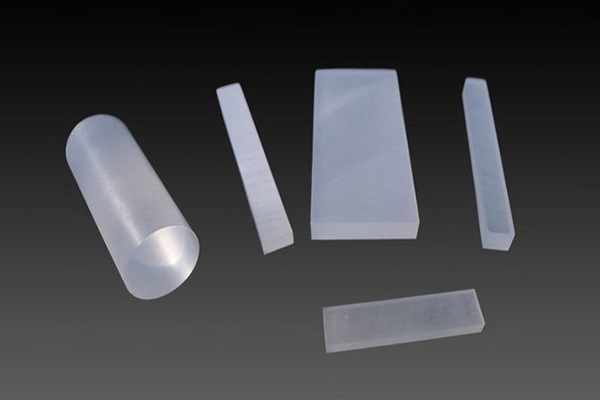Nonlinear Crystals: LiIO3
Nonlinear Crystals: LiIO3
Description

LiIO3 (lithium iodate) is a nonlinear crystal that is commonly used in laser technology for frequency conversion. LiIO3 has a relatively high nonlinear coefficient, a wide transparency range, and good thermal and mechanical properties, making it suitable for a range of applications such as second harmonic generation (SHG), sum frequency generation (SFG), and difference frequency generation (DFG).
In SHG, the frequency of a laser beam is doubled by passing it through a LiIO3 crystal. This process is used to generate light in the ultraviolet range, which is useful in applications such as fluorescence microscopy and laser spectroscopy.
SFG produces a new frequency that is the sum of two input frequencies. LiIO3 can be used in SFG to generate tunable visible and ultraviolet radiation, which has applications in microscopy, sensing, and imaging.
DFG produces a new frequency that is equal to the difference between two input frequencies. LiIO3 can be used in DFG to generate tunable mid-infrared radiation, which has applications in spectroscopy, sensing, and imaging.
LiIO3 has a relatively high damage threshold, which makes it suitable for high-power laser applications. It also has good thermal stability, which means its optical properties are less sensitive to temperature changes. Additionally, LiIO3 has a relatively low absorption coefficient, which means it can be used with high power lasers without significant degradation in performance.
However, LiIO3 is a relatively expensive material compared to other nonlinear crystals, which can limit its use in certain applications. Additionally, LiIO3 crystals can be difficult to grow and fabricate, which can increase their cost and lead times.
| Transparency range, µm | 0.28 - 5.50 |
| Point group | 6 |
| Lattice parameters, Å | a = 5.4813; c = 5.1717 |
| Density, g/cm3 | 4.5 |
| Mohs hardness | 4 |
| Thermal expansion coefficient, at 293 °K: | |
| parallel to z-axis | 48 x 10-6 x K-1 |
| perpendicular to z-axis | 28 x 10-6 x K-1 |
| Refractive indexes at 1064 nm: | no = 1.8517; ne = 1.7168 |
| at 633 nm | no = 1.8830; ne = 1.7367 |
| Non-linear coefficient, pm/V | d14 = 0.22; d31 = 13.7; d33 = 5.86 |
| Optical damage threshold, MW/cm2 | 500 ± 200 (1064 nm, 20 ns) |
| Conversion efficiency, % | 50 (1064 nm, 20 ns, 50 Hz, 2 W) |
| 35 (780 nm, 20 ns, 20 Hz, 2 W) | |
| Chemical properties | hygroscopic |
Order Form
About Semiconductor Electronics
SEMI EL project is a global supplier of materials, equipment, spare parts and supplies for the semiconductor industry.
Get In Touch
Email: info@semi-el.com

